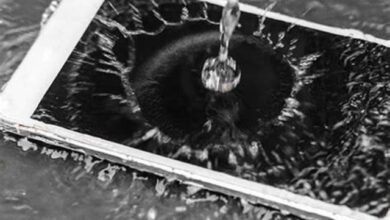
Encountering Windows Error Code 0x80070057 can disrupt tasks and often signals storage-related issues, prompting the need for troubleshooting and potential solutions.
Getting an error code on Windows can be really annoying because it’s often unclear what went wrong. However, the code itself provides clues about the issue, especially when you consider when it popped up. For instance, if you see error code 0x80070057, it’s typically linked to problems during installation or updates. Understanding this can help you find a solution.
Windows Error Code 0x80070057 Mean:
Error code 0x80070057 signals a hiccup in your storage space – your hard drive or SSD might be running low on room for file downloads or copies. It could also hint at a clash in the file system, a wonky hard drive, or some other storage-related glitch.
The error message can wear different masks, often saying “Unknown error,” “Unspecified parameters encountered,” or bluntly stating that the “Required services are not running.”
Picture this: you’re in the middle of something, and then bam! The update service craps out, kicking you right back to where you started.
This error has a bit of a history, especially during the 2016 Windows 10 Anniversary Update. Users faced incomplete updates, temporary system “breaks,” or a not-so-pleasant return to Windows 10 Build 1507.
Error 0x80070057 often pops up when:
- Backing up files encounters corruption.
- Installing Windows hits a snag with a corrupted System Reserved Partition.
- Messed-up registry or policy entries play spoilsport during Windows Update.
- Update installation problems force the system to give it another shot later.
It’s annoying, but fear not – it’s fixable.
How Error Code 0x80070057 Shows Up:
The 0x80070057 error code might pop up on a Blue Screen of Death or a white pop-out window, depending on how serious it is. While not as severe as some other Windows errors, it still puts a halt to what you’re doing.
This error often relates to storage issues and tends to appear when installing a new app, running a Windows update, or upgrading from an older Windows version, like 7 or 8.1. Interestingly, it’s been hanging around since the days of Windows 7 in different forms.
Why Fix Windows Error Code 0x80070057?
The 0x80070057 error code shows up on a white popup or a BSOD screen, depending on the issue. While not super serious, it can interrupt your work and force-close your apps if not fixed.
Also, if it happens during a Windows update or installation, it might block you from updating or installing applications. Fixing it is a good idea to avoid these disruptions.
Causes of Error Code 0x80070057:
If you spot error code 0x80070057, it means your storage—like a hard drive or SSD—is acting up. This could be because you’re trying to install something too big, running out of space, or attempting to copy files beyond the limit.
During Windows installation, this code often pops up if your storage lacks space or uses the wrong file system for your Windows version. The same goes for Windows updates – if there’s a storage hiccup, these sizeable installations can trigger the annoying 0x80070057 error.
If your hard drive is getting on in years or you’ve tinkered with partitions, a corrupted partition could be the culprit. Trying to install or copy data to that part might trigger error 0x80070057 as the disk struggles.
Interestingly, this error isn’t shy – it can show up when creating a new Outlook profile or in various applications, especially if your storage is low or if there’s a hardware glitch.
How to Find the Cause of Windows Error Code 0x80070057:
Decoding Error Messages:
- If you see “The parameter is incorrect,” it might be a registry issue.
- “Something went wrong” points to a Microsoft Office error.
- Messages like “There were some problems installing updates, but we’ll try again later” suggest an installation/update problem.
Sync Date & Time:
- Check and sync your date and time in the bottom-right corner of your screen. Search “Change time” in the Windows bar to adjust.
Clean Drive Space:
- If storage is the issue, free up space on your main drive (usually C:).
- Right-click on the drive, select Properties, and use Disk Cleanup to delete unnecessary files.
Check for Pending Updates:
- Look for pending Windows updates. Click “Check for Updates” in the top-right corner of the Windows bar.
Run Check Disk:
- Use the Check Disk tool to identify and fix corrupted files or damaged partitions.
- Launch File Explorer, right-click on your system drive (C:), go to Properties > Tools > Check for errors.
Create a New Partition:
- If a partition is old and corrupted, delete it, and perform a clean reset.
- Backup data, find the drive, right-click, select Delete volume, confirm, and create a new partition.
Run the DISM Tool:
- For Windows update errors, run the Deployment Image Servicing and Management (DISM) tool.
- Open Command Prompt as an administrator, enter “DISM.exe /Online /Cleanup-image /Restorehealth,” press Enter, then type “sfc /scannow” and press Enter.
Windows Restore or Reset:
- As a last resort, perform a Windows restore or reset.
- Go to Settings > Update & Security > Recovery > Reset this PC.
- Backup data, select Get Started, and follow the prompts.
Run System File Checker:
- Use the in-built Windows System File Checker to diagnose and fix issues.
- Search for Command Prompt, right-click, select Run as Administrator, type “SFC /scannow,” and press Enter.
How to Fix Error Code 0x80070057:
Check Date and Time:
Ensure your system’s date and time are correct. Go to the bottom right corner, click the time/date, and adjust if needed.
Run Chkdsk:
Use the Windows error-checking tool or Chkdsk to find and fix issues with storage hardware, corrupted data, or damaged partitions.
Free Up Drive Space:
Clear space on your main drive (usually C:) by deleting unnecessary files or uninstalling apps. Consider using disk space analyzer tools like CCleaner.
Run Anti-Malware Scans:
Conduct a deep anti-malware scan to rule out viruses or malware causing the error. Use reputable antivirus software.
Run Windows Update:
Ensure your Windows version is up-to-date. Run Windows Update, download, and install any available updates.
Try System Update Readiness Tool:
If on Windows 7, use the System Update Readiness Tool from Microsoft’s website to fix update issues before attempting again.
Run DISM Tool:
For Windows 8.1 or 10, use the Deployment Image Servicing and Management (DISM) tool. Open Command Prompt as administrator, enter “DISM.exe /Online /Cleanup-image /Restorehealth,” then “sfc /scannow.”
Try System Restore:
Use System Restore to revert your PC to a previous state. Back up important data before attempting.
System Reset:
If System Restore fails, use the built-in “Reset This PC” tool. Back up important data before performing a system reset.
Clean Format with New Partition:
If needed, delete partitions and perform a clean Windows reset. Back up data and reinstall Windows.
Consider Buying a New Drive:
If all else fails, replacing the hard drive, preferably with an SSD for better performance, could be a solution. Transfer files to the new drive.
You may also read How to Fix “Screensaver not working” issue on Windows and Mac?
- How to Fix Kernel Power Error 41 in Windows 10?
- How to Fix the Volume Does Not Contain a Recognized File System
Conclusion
If your storage problems persist, consider getting a new drive, especially a storage SSD. This not only expands your disk space but also allows smooth installation of pending updates stuck due to storage issues. Regular updates are crucial to identifying and fixing security vulnerabilities, protecting your device from potential attacks. Upgrading your storage can give your device a fresh start and improved performance.






